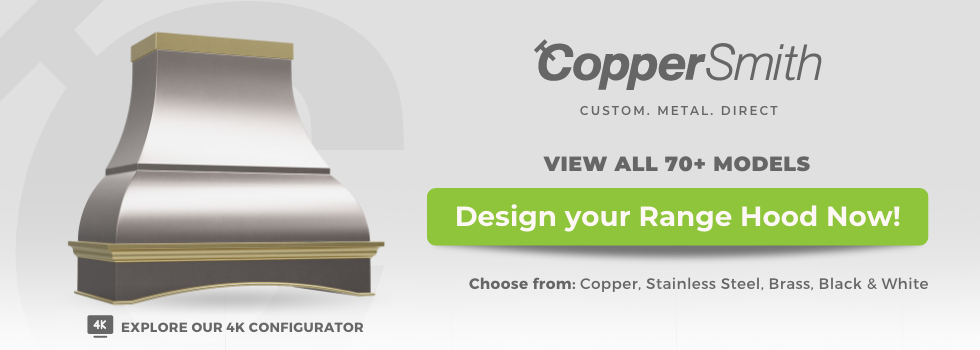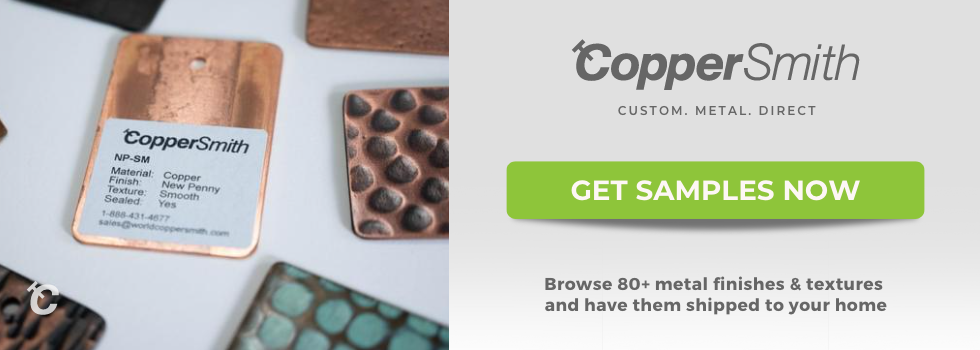A new range hood makes for an exceptional household addition for many reasons – cleaner air and surfaces, better cooking experience, enhanced aesthetic appeal, and more – but choosing the right kitchen hood can often be an overwhelming process. How large should your range hood be? Do you need to install ducting? What about the noise level? These concerns and more should all come into play during the selection process, and understanding how to answer these questions will help guide you toward the right decision. Here’s what to look for when selecting the perfect range hood for your kitchen.
Key questions to ask when choosing a range hood
When looking for a range hood for your kitchen, it’s essential to make sure that you choose a product that checks all of the boxes. To make selecting the right range hood for your home simple and stress-free, here is a list of key questions to ask before you decide:
Which styles do you prefer?
Kitchen range hoods provide a diverse range of practical functions but they can also add instant style and flair to your home. If you’re looking for a range hood that will attract attention or enhance the look of your kitchen, you’ll need to think about which designs and styles you like. At CopperSmith, we have a spell-binding selection of range hoods available in a wide range of sizes and finishes to suit every customer. From traditional hoods to custom-made designs that will steal the show, we have something special for every kitchen.
Think about the design, theme and vibe of your kitchen, explore different models and consider your design goals. Are you searching for a range hood that will blend in and complement the countertops or stove perfectly, or do you want to use your range hood to introduce a new color, trend or theme?
What is the best material for your project?
We have an incredible selection of kitchen range hoods available in all kinds of materials. Choose from brass, stainless steel and copper range hoods. The material you choose will impact the aesthetic of your kitchen, but it’s also an important consideration in terms of practicality and functionality. Some materials, for example, brass and stainless steel, are ideally suited to indoor and outdoor kitchens while others, such as copper, offer safety and hygiene benefits for families and businesses. The material will also affect the cost.
What is your budget?
The price of range hoods varies according to the material, the quality of the product, the design and the size. Before you start shopping, figure out your budget. This will help you to make the right design choices and narrow down the options.
What are the dimensions of your stove and how big do you want the range hood to be?
Ordering the right size range hood is critical to create a safe kitchen environment, encourage effective airflow and enhance aesthetics. Check the dimensions of your stove, measure the kitchen to ensure you have sufficient space for the range hood and think about how big you want the hood to be. Some people want to save space with a range hood that matches the width of the stove while others want to make a bold design statement with an oversized range hood.
What are your priorities and requirements?
Every homeowner is different. It’s wise to list your priorities and requirements when looking for a range hood. How often do you cook and what kinds of foods do you enjoy cooking? How big is your kitchen? How much do you want to spend? Are you looking for an affordable everyday range hood, or do you need a powerful, high-performance model? Are you interested in understated aesthetics, or do you want to create a stunning custom-designed range hood?
Which range hood is the best option for me?
There is a huge selection of range hoods available. The best way to find the right range hood for your kitchen is to tailor your search to match your requirements and preferences. Once you have answered the questions above and identified priorities and needs, you can start thinking about which materials to choose, what kind of mount you need, how big you want the hood to be and which styles will look best in your home.
CopperSmith offers a vast array of range hoods for domestic and commercial kitchens, but we also provide opportunities to customize designs to create beautiful products that check every box on your list. Using innovative 3D configurator tools and imaging technology, we create bespoke designs and provide customers with detailed, personalized quotes. The options are endless with our customization service. Click here to get a custom quote today!
As well as offering a customization service, we also provide expert advice. If you have any questions about our range hoods, or you’re unsure which option to go for, our experienced advisers and talented, creative designers can offer advice and personalized recommendations. If you don’t know which material will suit your needs best, or you’re looking for design inspiration for a contemporary kitchen remodel, contact us now.
Ventilation
The ventilation of your range hood is often referred to as its exhaust, and there are generally two options – ducted and non-ducted.
Ducted
A ducted range hood – also known as vented – provides ventilation from your range to the outside of your house. This serves to completely remove irritants like smoke, heat, and unpleasant odors rather than having them linger in your kitchen and on its surfaces. Ducted ventilation is an easy route to go if the hood is mounted to an exterior wall because the air has less distance to travel to make it outside. If the stove hood is mounted to an interior wall or to the ceiling, air has to travel further and may require a more powerful hood fan to achieve efficient operation.
Non-ducted
A non-ducted range hood – also known as non-vented – sends air through a filter to remove irritants and then sends it back into the kitchen. With this setup, you will need to change the filter every few months to ensure continued effectiveness. As its name suggests, non-ducted ventilation requires no ducting work and may be a preferred option if your hood isn’t being mounted to an exterior wall. It should, however, be noted that a non-ducted option won’t work as well to remove heat and humidity from your home.
Location
Where you plan to install your vent hood is another important factor in deciding which type you’ll purchase and how big it will be. A properly sized hood must cover the full width of the range and at least 50 percent of the front burners.
Under-cabinet
range hoods attach to the underside of a cabinet above your range. They are typically more affordable and can be either ducted or non-ducted. Ducted will be a bit more expensive but will also be more effective in removing air.
Wall-mounted
range hoods are similar to under-cabinet but are instead mounted to the wall in the event there are no cabinets directly above the range. They are also known as chimney-style range hoods due to their similar geometric appearance to that of a fireplace chimney.
Island
range hoods descend from the ceiling over your island. They are similar in appearance to wall-mounted range hoods but simply run through the ceiling rather than the wall. Island range hoods are a bit more expensive than other options but are the best way to go when mounting over an island range.
Downdraft
range hoods are hidden within your range surface and pop up when in use to help remove steam and smoke. They are connected to ducts beneath the floor (hence “downdraft”) and aren’t as effective as larger options – but they’re also not as expensive and are popular for islands because they don’t impede the line of vision.
Insert
range hoods are completely hidden by being built into the wall or cabinetry above a range. These hoods require a custom fit and rely on power packs that are mounted and ducted to be non-obtrusive.
Custom
range hoods may be what your kitchen calls for if you’re looking for a more unique solution, and the right partner will be able to work with you to find the perfect fit for your home and its needs.
Power
The air movement achieved by a range hood is measured in cubic feet per minute (CFM). If you perform lots of heavy cooking in your kitchen, your range hood will require a CFM of at least 350. The Home Ventilating Institute recommends a minimum of 100 CFM per linear foot for wall-adjacent hoods and 150 CFM for island hoods. For high-output gas ranges, a minimum of 1 CFM per 100 BTU is the standard. A range hood expert will be able to work with you to meet your power needs without going overboard.
Noise
The noise of a range hood is measured in sones, with one sone roughly equating to the sound of a running refrigerator. The noise of a range hood is a common complaint among owners, but a higher-powered system is never going to be completely silent. Check out a model in person or rely on customer reviews to get a feel for a hood’s sound level when browsing.
Appearance
It’s clear there are a lot of options when choosing your range hood, and selecting the right one can add a significant aesthetic appeal to your kitchen. Apart from the hood type and placement, the finish and design style are also leading factors that will contribute to the look and feel of the space. Copper and black range hoods are extremely popular and perform exceptionally well while also adding to the atmosphere of your home.
Cost
Your budget will play a big role in determining what you can and can’t achieve with your range hood. Certain elements will be required depending on your situation (the need to use an island or downdraft installation if your range is on an island, the need to go non-ducted if ducted isn’t logistically feasible, etc.).
Find your perfect range hood with CopperSmith
More options become available as your budget grows, but no matter what you’re looking to invest, CopperSmith can help find the perfect range hood solution for your kitchen. Contact us today and browse our industry-leading collection to discover the right range hood for your home.




